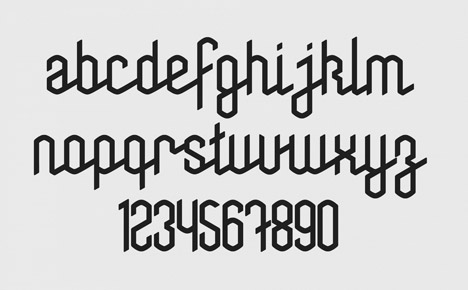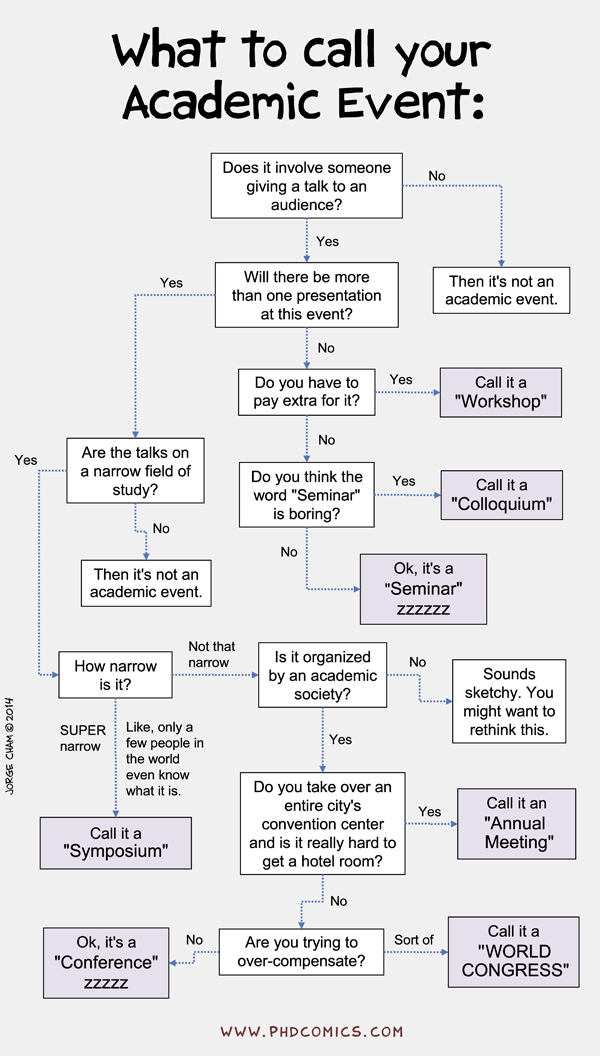
Skeletor Affirmations (by ghoulnextdoor)
TODAY I CELEBRATE MY ACCOMPLISHMENTS.
Opinion: a digitally-driven revival of interest in sewing proves that people want to create, but the 3D-printing movement is failing to cater to a market that wants something practical and beautiful, says Alexandra Lange.
In March, Slate Magazine's Seth Stevenson provided a public service when he borrowed a Solidoodle 4, pitched as the "accessible", "affordable" 3D printer, and attempted to print a bottle opener from Thingiverse. Results, as they say, vary, but he ended up, after a series of phone calls and false starts, with "a functionless, semi-decorative piece of plastic."
The bumbling encounter with technology is a popular stratagem for Slate, but here it pointed directly to the reason we're not seeing a 3D printer in every den. I've seen those rhino heads, those dinosaur skulls. They do not fill me with delight, but remind me instead of the cheap toys my kids bring home from birthday parties and I throw away in the night. Why bother? How is printing your Triceratops at home more creative, more making, than buying one from a store? In either case, step one is scrolling through pages of online options, pointing and clicking in 2D.
Stevenson concluded that 3D printing was no place for amateurs, but for tinkerers. Those able to work under the hood of the printer: to understand the terms in the manual, to customise or create their own products for Thingiverse. For such tinkerers, neighbourhood printing hubs like Techshop, where subscribers can go to use physical or digital tools, make more sense. Designers taking advantage of 3D printers' capabilities for rapid prototyping and small-batch production have already started farming out the actual printing to places like Shapeways. When we stopped having to fax even weekly, we all got rid of those machines.
But then Stevenson took a turn toward the larger question of craft. He wrote, "Once upon a time, people purchased sewing patterns (like a program from Thingiverse) and yards of fabric (like filament) and they made their own clothes. I wasn't alive back then, but I'm pretty sure the process sucked."
The digital age has not turned sewing into a novelty, but spawned a revival of interestI must be older than Stevenson, because my mother and grandmother sewed clothes for me. My mother, aunt and I have all sewed clothes and quilts for my children. They are not amateurishly constructed. We managed to make them while also holding down full time jobs. And judging from the extremely active online sewing community, the active trade in old machines and patterns on Ebay, and the ease with which one can locate a scan of a thirty-year-old sewing machine manual, the digital age has not turned sewing into a novelty, but spawned a revival of interest. In fact, if 3D printers are truly going to become a consumer good, they have a lot to learn from the sewing machine.
Because Stevenson snidely generalised from his own limited experience, he missed the instructive dialogue between craft and the machine age. Post-industrial sewing is not a freak but a respite. In Evgeny Morozov's recent New Yorker essay on the new makers, he quotes historian Jackson Lears' critique of the Arts & Crafts movement as "a revivifying hobby for the affluent." I'd say middle-class: (mostly) women who aren't seeing what they want, at a price they can afford, in the marketplace.
There’s an appetite for the "refashion," recycling an old dress or an adult T-shirt, and turning it into something new. Once upon a time, the use of flour sacks as fabric prompted grain-sellers to start offering their wares in flowered cotton bags. If some boutique grain company began doing that again, there would be a run on their product. Under the technology radar, there's a community of people sharing free patterns, knowledge and results, without the interpolation of brands, constantly obsolescent machinery, or the self-serving and myth-making rhetoric Morozov finds in Chris Anderson's Makers. There are the answers to the questions "Why bother?" and "How creative?" Rather than sewing being a cautionary tale, 3D printing can't become a consumer good until it learns a few lessons from why we sew now.
Number one: what's not available on the market. If you have a girl child in America, it is often difficult to find reasonably-priced, 100 per cent cotton clothing for her without ruffles, pink or purple, butterflies and hearts. If you go to the boy section, you run into an equally limiting set of colors, navy and army green, and an abundance of sports insignia. A full-skirted dress, a petite skirt, prints for the plus-sized – there are plenty of styles that are not novelties but, when not in fashion, disappear from stores. Online you can find patterns to make any of the above for less than $10, and fabric at the same price per yard. Online you can find step-by-step explanations, with photos, of how to make that pattern. That world of patterns is vast, constantly updated, and historically rich. Yes, sewing your own garment will take some time, but then you will have exactly what you want. That's why women bother.
At the Makerbot showroom in Boston, they showed nothing that was usefulThe consumer-facing side of 3D printing is Thingiverse, where you can download a digital file (like a pattern) to tell your 3D printer what to print. This is a little different than sewing because, while you can choose your filament (at $43 per roll), you don't have much input. You are not cutting, pinning. You are not customising. And a skim of the offerings suggests not so much items not on the market, or even items desperately needed, but items to show off that you 3D printed something. Vases, figurines, intricate and unwearable wearables. Why spend the time or money? Even at the Makerbot showroom in Boston, they showed nothing that was useful (a jet-pack bunny) and few things that were beautiful (honeycombed Easter eggs). All objects, no problem-solving.
The only 3D printed object I have ever desired is the Free Universal Construction Kit, designed to allow one to attach Lego to Bristle Blocks to Zoob. It definitely solves a problem not addressed by the market. It's not on the market because the rival toy manufacturers have no interest in getting everything to connect. I still wouldn't want to print it at home: I would rather send the job to the Makerbot showroom, and let someone else mind the machine, because my input would be minimal.
Second lesson: recycling. Say my mother did actually sew something amateurishly. That's not the end of the story. A mis-printed jet-pack bunny is so much trash (unless I buy a second machine like a Filabot to remelt my filament). A mis-sewn seam can be ripped out and redone. An old dress can be refashioned into a new one. A favorite vintage piece can be copied. Sewing does not create more waste but, potentially, less, and the process of sewing is filled with opportunities for increasing one's skills and doing it over as well as doing it yourself. What are quilts, after all, but a clever way to use every last scrap of precious fabric?
The rapid obsolescence of 3D printers suggests a lifecycle closer to that of phoneSo far, 3D printing's DIY aspects seem more akin to the "magic" of an ant farm, watching growth behind glass. Sewing lets the maker find their own materials, and get involved with every aspect of the process. 3D printing could do this, and there are classes, but even at the Makerbot showroom the primary interaction seemed to be ordering from Thingiverse. My local sewing shop has to teach more women to sew to survive; I don't see the printer makers coming to the same conclusion.
In addition, the machines themselves are constantly becoming junk. It's not unusual for new technology to change quickly. That's the fourth Solidoodle since 2011. Makerbot is on its fifth generation. It is early days for 3D printing, and the machines may eventually stabilise. But the rapid obsolescence suggests a lifecycle closer to that of a mobile phone than of a washing machine, which might also turn consumers off. The sewing machine was considered a lifetime purchase.
Last but not least, sharing. This is the one consumer area where 3D printing approaches sewing's success. From the Free Universal Construction Kit to full-body scans, the idea of open-source, free, and social-media enabled printing has been built-in to the 3D process. Showing off what you made is better when you created it, rather than printed it out. On the sewing blogs, the process pictures are half the fun, and most of the interest. What does it really teach your children when you can get doll house furniture on demand, except a desire for ever-more-instant gratification? For me to believe in 3D printers as a home machine, I'd have to see the digital file equivalent of women in their off-hours, making up patterns as they go along, sharing mistakes, dreaming better dreams. 3D printing feels bottled up, professionalised, too expensive for the experimentation of cut and sew and rip and sew again.
Stevenson wrote, "most people would much rather just get their clothes from a store — already assembled by people employing industrial-level efficiency and a wide variety of materials," and that's true. What Solidoodle and Makerbot and the rest should be looking at is the people who have seen everything in the store and found it wanting.
Sewing machine image courtesy of Shutterstock.
Alexandra Lange is a New York-based architecture and design critic. She is a Loeb Fellow at Harvard's Graduate School of Design for academic year 2013-2014 and is the author of Writing About Architecture: Mastering the Language of Buildings and Cities as well as the e-book The Dot-Com City: Silicon Valley Urbanism.
The post "3D printers have a lot to learn
from the sewing machine" appeared first on Dezeen.
News: a man has been arrested in Japan for possessing 3D-printed handguns, after five devices were found during a police raid on his house.
Japanese police are reported to have confiscated five plastic gun-shaped items and 3D-printing equipment from the 27-year-old man's home in Kawasaki in April, with two of the five objects later found to be capable of firing real bullets.
The college employee has allegedly been charged in relation to these two objects, although no live bullets were found. Gun ownership is strictly regulated in Japan – the arrest marks the first application of this law to an item made using printing technology.
One of the guns appears similar in design to the prototype Liberator firearm developed by Texan law student Cody Wilson, who published the blueprints for his device online but was later forced to remove them by the US government.
"Police say this is the first time in Japan they have seized guns possibly made with the technology," reported Japanese broadcaster NHK World.

NHK said that police launched the investigation after the man posted videos of the guns online, and that the suspect has admitted using a 3D printer to make the devices although he did not think he was breaking the law.
The broadcaster reported that 3D blueprints for a handgun were found on the suspects computer and that police suspected he had sourced these online.
Tokyo-based news agency Jiji Press said the man was an employee of the Shonan Institute of Technology in Kawasaki and also owned a number of toy guns.
In October last year, British police claimed to have seized 3D-printed gun parts for the first time during a raid on a property in Manchester. They were later forced to clarify their statement after the 3D-printing community pointed out the similarity between the confiscated objects and harmless printer upgrade parts.
In November last year, American company Solid Concepts claimed to have built and successfully fired the world's first 3D printed gun.
The post Man arrested for owning 3D-printed gun appeared first on Dezeen.
American design firm Sagmeister & Walsh has created a new brand identity for New York's Jewish Museum based on traditional shapes used in Judaic symbolism (+ movies).

The Jewish Museum wanted "an engaging, exciting, contemporary branding that embodied the Jewish heritage and culture of the Museum."

Sagmeister & Walsh researched the origins of the Star of David and discovered "sacred geometry" – a geometric system created from calculations using numbers considered to have spiritual significance – from which they were able to create a new identity.

Located in a seven-story mansion in the Upper East Side of Manhattan, the Jewish Museum is the preeminent museum in the United States devoted to Jewish art and culture, and one of the three largest in the world.

Their collection, distinguished by its breadth and quality, includes some 30,000 items.

The brief for Sagmeister & Walsh was to connect the historic and the contemporary, engaging multiple generations of visitors.

"When we were studying the Star of David, we learned that it was created using sacred geometry," said studio co-founder Jessica Walsh.

"The origin of this geometry goes back to the belief that the universe was created according to a geometric plan. Its roots are in the study of mathematics, and many forms in nature can be related to this geometry," explained Walsh. "This geometry was used in the planning and construction of much religious art and architecture."

Using several grids that are considered part of sacred geometry, from the flower of life – a geometrical figure composed of evenly-spaced, overlapping circles – to tetrahedron patterns, Sagmeister & Walsh designed stationery, packaging, advertising campaigns, promotional materials, and a new website that will launch in June.

"The foundation of the brand is based on Jewish symbolism, but the end result is contemporary," said Walsh.

"We often create restrictions on our work which help guide us to a solution or concept. We do not find limitations like grids challenging, restrictions can actually help creativity thrive," she explained.

"If you can do anything, it's often difficult to focus and you can get lost in all the possibilities. When you have a set of limitations like a grid, it can be easier to be creative."
A vibrant royal blue permeates through all the collateral. "Blue is an important colour in Jewish history, and we opted for a contemporary shade," said Walsh. "Again, we wanted the branding to be based on heritage, but look contemporary."

To ensure any photography used in Jewish Museum communications fitted the new brand, Sagmeister & Walsh built a processing application that uses the same grid system to turn a photograph, or even a webcam stream, into bespoke Jewish Museum illustrations.
"This system invites surprise and flexibility across all media, while maintaining a unified visual language," explained Walsh.

The brand identity is live across the Museum communications now and the website launches on 1 June 2014.
The post Sagmeister & Walsh uses "sacred geometry"
to rebrand New York's Jewish Museum appeared first on Dezeen.
Russian Sledges#collarnotes

224,00 USD
Vintage 1940s, early 1950s pink silk organdy party dress with saturated pink velvet portrait collar and trailing bow, 3/4 sleeves, princess seaming, full skirt and metal back zipper.
✂-----Measurements
fits like: small
bust: 36"
waist: 27"
hip: free
length: 45.5"
brand/maker: n/a
condition: excellent
To ensure a good fit, please read the sizing guide:
http://www.etsy.com/shop/DearGolden/policy
➸ More vintage dresses ✩
https://www.etsy.com/shop/DearGolden?section_id=5986725&ref=shopsection_leftnav_3
➸ Visit the shop ✩
http://www.DearGolden.etsy.com
_____________________
➸ instagram | deargolden
➸ twitter | deargolden
➸ facebook.com | deargolden
➸ blog | www.deargolden.com
Russian Sledges#bustnotes

265,00 USD
Vintage 1950s painterly floral cotton sheath dress with cap sleeves, inverted pleated bodice, slightly elevated waist with mossy green velvet bow belt detail, fitted waist, slender skirt with gorgeous bustle effect at the back and metal back zipper.
✂-----Measurements
fits like: xs
bust: 34"
waist: 25"
hip: 37"
length: 43"
brand/maker: Miss Brooks | New York
condition: excellent
To ensure a good fit, please read the sizing guide:
http://www.etsy.com/shop/DearGolden/policy
➸ More vintage dresses ✩
https://www.etsy.com/shop/DearGolden?section_id=5986725&ref=shopsection_leftnav_3
➸ Visit the shop ✩
http://www.DearGolden.etsy.com
_____________________
➸ instagram | deargolden
➸ twitter | deargolden
➸ facebook.com | deargolden
➸ blog | www.deargolden.com
Russian Sledgesplease let this not be real
Russian Sledges(paywall)
Russian Sledges(paywall)
Russian Sledgessorry, providence

In the eighties and nineties, the model Fabio Lanzoni popularized “the clinch”—the image on Harlequin paperback covers of a muscled man clutching an enraptured woman against his bare pecs. When I was in high school, my friends and I used to hunt down these Harlequins from used-book stores. Our favorite featured an improbably Scottish Fabio who spoke in a brogue—we knew what was under his kilt.
In 2006, Fabio, his long mane still blond, guest-starred on the reality show “America’s Next Top Model,” posing with the contestants in a photo shoot for fake Harlequin covers. By then, Fabio had faded, as had the brand with which he had long been identified. Madeleine Davies later recalled on Jezebel, “If you saw it you’d definitely recall seeing as it might have been one of the grimmest things to have ever appeared on television. Fabio was at least twice the age of the season’s oldest contestant and watching the young girls feign (at best) enthusiasm and (at worst) horniness throughout the shoot was close to unbearable.”
Harlequin Books Limited—now Harlequin Enterprises—was founded in 1949 in Canada as a small printer, packager, and distributor of books. In the nineteen-fifties, Harlequin started reprinting titles from Mills & Boon, a British publisher of popular romance novels. In 1972, Harlequin acquired Mills & Boon, and soon was synonymous with the romance novel. By 2012, romance novels were a 1.5-billion-dollar-a-year business that made up nearly seventeen per cent of fiction sales. But, for the past several years, Harlequin’s sales have declined as people have started getting their romance from erotic—and often self-published—e-books instead of grocery-store paperbacks. Last week, News Corporation announced it would acquire Harlequin from its parent company, Torstar Corporation, for about four hundred and fifteen million dollars—not much more than Harlequin’s revenue last year. Harlequin will become a division of News Corp.’s HarperCollins Publishers.
Joe McAleer, a historian who has written about Harlequin, told me that Harlequin romances have traditionally followed a formula: “Boy meets girl, boy loses girl on page 56, and, by page 180, the book would end with a marriage proposal.” By the seventies, Harlequins became known for their lush language, which often evoked settings that sounded like Thomas Kinkade paintings: “The rolling tide of summer grass had engulfed the small meadow in a sweet-smelling flood of lambs’ tails, coltsfoot, feverfew, the drifting pollen from them like pale yellow dust on Linden’s bare arms as she lay full length among them,” Charlotte Lamb begins in “Temptation,” published in 1979. When Fabio—the Great Blond One—arrived on the scene, he was a natural fit.
But a year after Fabio’s “Top Model” cameo, Amazon released the first Kindle e-reading device. By 2010, romance novels were the fastest-growing part of the e-book market; Julie Bosman, of the Times, wrote that readers were trading “the racy covers of romance novels for the discretion of digital books.”
People were reading digitized Harlequin editions, but the Kindle and other e-readers had also made it easier for individual authors to self-publish their novels and for smaller romance publishers to get attention for their titles. Some of these novels were racier than what Harlequin traditionally offered. In 1961, Harlequin had broken the mold by publishing Violet Winspear’s “Lucifer’s Angel,” then considered very titillating. But some self-published novels went beyond even the most liberal Harlequin lines. Several Amazon best-sellers, like T. K. Leigh’s self-published “Gorgeous Chaos,” are labelled “explicit.” In 2012, the Fifty Shades trilogy, by E. L. James, had more total sales than Harlequin’s North American retail division.
Harlequins can get racy, but they retain something of their genteel British roots. Its Web site notes that the Harlequin Blaze series—its “sexiest” imprint—is “not erotica.” (“While our books are very sensual, they deliver on the Harlequin promise of one hero, one heroine and an implied committed relationship at the end.”) Still, Harlequin has tried to adapt to the rise in e-books and to the interest in more hardcore material. A few months after James’s books exploded across the best-seller list, Harlequin released some B.D.S.M. titles (“Bonds of Desire,” “Bonds of Courage”) on its digital imprint, Carina Press. Harlequin’s digital revenue is growing, but not enough to make up for the decline in its print business.
Allison Kelley, the executive director of the Romance Writers of America, told me that, historically, Harlequin was where budding romance writers would start their careers, since the publisher accepted submissions from anyone—even writers without agents. Now many new authors are self-publishing best-sellers, and established authors are acquiring expired rights and self-publishing their own backlists. Almost a quarter of Harlequin’s global book-publishing revenue last year was from digital sales. Still, according to Digital Book World, in 2013, there were ninety-nine self-published e-book best-sellers; Harlequin, in comparison, only had twenty-one.
Harlequin is still trying to adapt the boy-gets-girl story line to the digital world. This week, Mills & Boon—still a subsidiary of Harlequin—launched The Chatsfield, a Web site for a fictional luxury hotel that serves as the jumping-off point for a host of stories. Readers can even follow characters’ social-media accounts. (The Chatsfield resembles a steamier version of American Girl’s Innerstar University, which I wrote about last year.)
Harlequin has been particularly good at establishing itself outside North America. It publishes more than thirteen hundred authors, putting out more than a hundred titles a month in thirty-four languages; it has offices in sixteen countries. This strong international presence is what attracted News Corp. Ninety-nine per cent of HarperCollins’s revenue comes from English-language markets, its C.E.O., Brian Murray, told me; by contrast, forty per cent of Harlequin’s revenue comes from books published in languages other than English. (Many foreign titles are translations from Harlequin’s voluminous backlist.) “There’s always been a particular appeal, wherever you are in the world, for the English-based romance,” McAleer, the historian, said.
Harlequin offers a foothold into digital and international markets that HarperCollins and News Corp. will be able to exploit. This isn’t to say that Harlequin’s subject-matter expertise is unimportant. Robert Thomson, the chief executive of News Corp, told me that Harlequin’s international “empathetic expertise” would be “redeployable across content: If you are connecting people in romance, you have insight into cultural mores.”
Credit: Harlequin.

I remember, at age eight or nine, making a batch of brownies. As I waited for the oven timer to buzz, I brushed some flour across my cheek. I was imitating a commercial that I’d recently seen: a mother dawdles in the kitchen, reading a romance novel, while, from the next room, her kid asks if the Rice Krispies treats are ready yet. “I’m still working on it,” she lies. She finally puts down her book, tosses flour onto her face, splashes some water from the fish bowl into her eyes, and carries the treats to her family. “They taste so good, your family will think you slaved over them all afternoon,” a voice intones.
My baptism by flour reflected an overly literal reading of the ad—a child’s naïve assumption that women actually mark themselves with baking supplies to prove that they’ve earned their keep in the kitchen. But in that misunderstanding was a germ of truth: we expect mothers to suffer.
A recent viral video, produced for American Greetings’ online greeting-card shop, Cardstore.com, also contemplates maternal suffering. The ad, titled “World’s Toughest Job,” purports to present footage of interviews with applicants for a job called Director of Operations. The requirements are onerous: unlimited hours of work, no sitting, no breaks, possession of degrees in “medicine, finance, and the culinary arts,” no pay. Then, the big reveal: billions of people already have this crazy job—moms.
The video has been viewed nearly eighteen million times on YouTube; many see it as a heartwarming reminder of all the hard work that mothers do. Others aren’t so impressed. “I don’t appreciate messages that seem to build women up while essentially telling them that nothing they can achieve in life matters more than having babies,” Mary Elizabeth Williams wrote at Salon.
There is nothing new about advertisers exploiting the myth of the Ideal Mother, although the myth itself, while remaining focussed on white, middle-class women, has evolved. During the Colonial period, women were viewed more as wives than as mothers, and economic activity and household responsibilities overlapped, the historian Stephanie Coontz told me. (You might sell the extra eggs laid by your chickens and send your children to apprentice with other families.) But, during the nineteenth century, middle-class Americans came to see the home as its own sphere, where women reigned, separate from the professional world of men. Mothers were expected to form intense emotional bonds with their children and to oversee their physical and moral development.
Around the time that advertising started reaching mass audiences, in the late nineteenth century, the language of motherhood became increasingly scientific: advice manuals and women’s magazines proffered expert opinions about how children should eat, sleep, and dress. Ads reflected concerns about mothering correctly. An ad from around 1889 promises that Lactacted Food will provide “that nourishment which is often wanting in mother’s milk.” Still, mothers were portrayed as having special emotional skills. An ad for Sweet Home Soap has three panels: in the first two, “the maiden aunt” and “the dude uncle,” respectively, wrestle with sobbing baby twins; in the third, the babies rest peacefully in the arms of “the mother.”
By the nineteen-twenties, attitudes toward mothers had begun to shift. Some psychologists and other experts warned against over-mothering, and commentators blamed mothers for the nation’s ills. A 1923 ad for IZAL Disinfectant tells the sad tale of “The Mother Who Loved Too Well.” “In her mistaken zeal,” a young mother yielded too much to her baby’s demands, leaving “no spoken or implied wish ungratified.” Weakened by her excessive attention, the baby died. (Abbott Laboratories, which sold the disinfectant, encouraged people instead to visit the doctor regularly, as part of a national campaign “to check the spread of disease.”)
Anti-mother sentiment peaked in the forties and fifties; in his best-selling 1942 book “Generation of Vipers,” Philip Wylie blamed the emasculation of American men on the influence of mothers, which he termed “momism.” (Among other things, he likened “mom” to Hitler.) Still, sentimental ideas about motherhood persisted, and the home remained the perceived sphere of female responsibility and satisfaction. By the middle of the century, some ads prefigured elements of today’s supermom ideal. “This Is Your Wife,” declares a 1957 Bell Telephone ad, above a picture of a woman literally wearing each of her different hats: chef, nurse, chauffeur, maid, and “the pretty girl you married.”
During the women’s movement of the seventies and eighties, some ads depicted the Ideal Mother as a powerful multitasker, endlessly capable of balancing work and home. In a 1980 television commercial for Enjoli perfume, a woman transforms from career gal to mother to seductress, over the lyrics: “ ’Cause I’m a woman, I can bring home the bacon, fry it up in a pan, and never let you forget you’re a man.”
All of these ads share two qualities with “World’s Toughest Job”: first, they present child-rearing as primarily the responsibility of mothers, and second, they reflect and reinforce contemporary assumptions about what motherhood entails. Our current parenting culture of taxing schedules, organic snacks, and profound emotional involvement—motherhood as a contact sport—pressures women to perform to impossible standards. Of course “World’s Toughest Job” went viral: these are challenging times for parents, and its message of praise for mothers seems, on the surface, to acknowledge these challenges. But the particular ideal of motherhood the ad presents—mom as superhuman, capable of physically impossible feats, all “with a happy disposition”—isn’t actually helpful to women (another feature that the video shares with ads that have used moms to sell things throughout history).
In this case, the ad condescends to mothers: the apparent praise, delivered by a smarmy middle-management type, exaggerates the work of motherhood to the point of caricature, ringing insincere. (I’m reminded of the boss who publicly praises his assistant, saying, “She does all the real work!” Then why don’t you pay her the real money?) It also devalues women’s achievements outside the home, suggesting that the proper and natural route to female satisfaction runs through motherhood. Like many ads, it dismisses fathers, whether single fathers, gay fathers, or fathers sharing equally with female partners in childrearing.
This depiction of motherhood isn’t merely annoying. It offers cultural cover for attitudes that do real damage to women, men, and families, reinforcing baseless perceptions of women as less reliable in the workplace, low expectations for fathers at home. (If these are skills specific to moms, dads are necessarily secondary parents; despite some progress, fathers, on average, still spend less time on housework and child care, and more time at leisure, than mothers.) It also obscures the more profound challenges faced by parents outside the privileged audience that it addresses. Most parents lack paid maternity or paternity leave, and many struggle to afford high-quality day care. For some parents, especially low-wage workers, taking time off to care for a sick kid or attend a parent-teacher conference means risking their jobs. If we were serious about honoring mothers, viral videos casting their lives as impossibly difficult wouldn’t warm our hearts; they would impel us to action.
Photograph courtesy of the Print Collector/Getty.
Russian Sledgesvia firehose
oblig.: https://www.youtube.com/watch?v=vdX0nf8nzDM
Read more of this story at Slashdot.
Russian Sledgesvia hoserbey
We wouldn't have known anything about it if a reader hadn't tipped us off that it happened. But in a congressional hearing this morning Rep. Louie Gohmert (R-TX) left a Comcast executive basically speechless when he accused the company of conspiring to keep Glenn Beck off the airwaves in favor of Sharia Law in the form of Al Jazeera America. Watch.
Russian Sledges'At first the woman from the BBC refused to take it down because it was already out there in the Twittersphere, But after a long exchange they removed it.
'Chris Brown did not respond.'
Russian Sledgesvia firehose via Jakkyn
attn james howard kunstler
Russian Sledgesvia firehose

It’s time to #BringBackOurGirls.
Read about how the U.S. is helping Nigeria in the search for those who were kidnapped.

It’s hard to believe, but even after two semi-finals this week, there will still be a whopping 26 songs competing to win the Eurovision Song Contest on Saturday night — warning: it’s going to be a pretty lengthy show. We’re assessing the chances of some of this year’s most notable songs, from the Armenian favorite to win, to the French song about desiring a moustache. But as previous Eurovisions have shown, really anything could happen. Those who didn't make the cut this year include a Latvian song about baking a cake and a Belgian ode to mothers, so the jury has chosen wisely thus far.
Note: Odds listed here are our own and decidedly UNofficial. If you're looking for actual oddsmaking, head here, where you will find that the professionals list the favorites as, in order: Sweden, Armenia, Netherlands, Ukraine, and the United Kingdom.
‘Not Alone’ might be the perfect Eurovision song; what starts off as a yearning piano ballad rolls into a thumping EDM anthem. All with hundreds of LED lights! Arem MP3 is already something of a celebrity in Armenia, and the country has never hosted the contest before, always a good reason to vote in their favor. It’s the favorite to win, and it just might. odds: 4-1 —LW
Twin Twin's "Moustache" is in French — except for the part about wanting a moustache — which dramatically reduces its odds of winning, but it's a fun, catchy club song. "Moustache" is probably a slang term for something inappropriate, but based on the English lyrics, this is a song about a guy who has everything he could ever want except a decent patch of upper-lip hair. What might really do this song in is the accusation that Twin Twin plagiarized Belgian artist Stromae. Belgium will not be awarding 12 points to France this year. odds: 14-1 —AJ
Hungary got an American ringer for their entry this year and they nailed it. Andras Kallay-Saunders was born in New York, but he's part of some noble Hungarian noble family so he counts! "Running" is very serious and dark but it has a chorus that moves, and a bunch of falsetto portions, which usually kill at Eurovision. He's a handsome fellow, this Andras, and that won't hurt much neither. odds: 3-1 —DS
"No Prejudice" is a perfect Eurovision song, in the sense that it's about bringing people together. In every other sense, it's a pretty bad song. The lyrics sound like something you'd sing to kindergarteners to keep them from becoming racists and fat shamers — "Let’s do away with prejudice/don’t discriminate, tolerance is bliss ... Even if you’re taller/ Or someone who is smaller/ Or perhaps you’re thinner/ Or one who loves his dinner" — which makes sense, since Pollapönk's lead singer was a preschool teacher. It's catchy and memorable, but making it past the semi-finals was probably the best Iceland could hope for this year. odds: 12-1 —AJ
‘Calm After The Storm’ doesn’t sound like a Eurovision song, and that’s precisely why it has a good shot at winning. It’s pure Americana from the Netherlands, performed by two beautiful Dutch people, with zero camp and zero irony. All that stands in their way is their genuine coolness: they look and sound like they got lost on their way to a music festival, not Eurovision. odds: 9-2 —LW
Russia's Tolmachevy Sisters, the human version of the Gemini sign, are the perfect, and blonde, antidote to Russia's ongoing spate of negative press. The enormity of Europe's Russian-speaking diaspora, and the desire by former satellite countries to pay homage to the motherland, means that Russia usually does well in Eurovision, but as predicted, the 17-year-old twins were booed when it was announced they'd advance to the final. As The Washington Post points out, lyrics to their song "Shine" include: "Living on the edge/Closer to the crime/Cross the line a step at a time." Might want to think it through a bit more next time. odds: 60-1 —LW
I love a good underdog story, and micro-nation San Marino are the ultimate underdogs. They've only been participating in Eurovision since 2008, and since then they've failed to qualify four times and withdrawn for financial reasons twice. This year, they finally made it to the big show with homegrown singer Valentina Monetta, who has submitted three entries for the country and declared this year her swan song. As for the song itself, "Maybe" is a totally pleasant plaintive ballad, with a music video shot on a beach. It's a perfect Eurovision entry! odds: 11-1 —DS
My experience with Eurovision has been that boring power ballad type songs do well, and that's pretty much Sanna Nielsen's "Undo" in a nutshell. Nielsen competed seven times in Sweden's Melodifestivalen for the honor of representing her country before finally winning this year, and bookies have her as the second most likely to win, right after Armenia. It also helps that all the Scandinavian countries tend to vote for each other. odds: 3-1 —AJ
They may not have a pair of warbling blonde twins like rival Russia, but ‘Tick Tock’ is actually a very catchy song. Ukraine have a continent's worth of sympathy on their side, as well as a man dressed like a waiter doing some tricks and flips in an enormous hamster wheel. They might win based on the protest vote alone, which will likely be substantial, as the Russians were booed during the semi-final. odds: 7-2 —LW
For the first time in the while, my home country has a real shot to win, with "Children of the Universe" by Molly Smitten-Downes (just call her Molly). There's a choir singing "power to the people" and a bunch of vague, universal lyrics about how we're all united as people. The chorus is very catchy and easy to remember. This is the kind of acceptable, broad-appeal power-pop balladry that can easily sweep to victory at Eurovision. odds: 5-2 —DS

This month will see the follow up to Owen Pallett's Heartland, the 2010 release that saw the artist formerly known as Final Fantasy forming a gorgeous and curiously unnerving collection of songs pairing lush orchestration against lyrical themes of mental isolation and self-doubt. For In Conflict (Domino/Secret City), Pallett's compositions are no less complex but now find the experimental composer giving focus to the benefit of dissonance and the abrasion of sound. For a songwriter whose music and exploration with sound already has the proclivity for expansion in the auditory space, Pallett is at his absolute best within those deliberately muted and subdued moments just before the eruption. Brooklyn Vegan reached out to Pallett to discuss the new record, his recent pop music commentaries, and his thoughts on music criticism in 2014. Owen Pallett is touring with Doldrums this month, two NYC shows included.
---
My first question just concerns your relationship with music and where you were when music first found you, Owen. When was that moment for you when you knew that creating music was something you absolutely had to do?
Owen: There's kind of two answers to that. My entire life, it's been me realizing over and over again that I'm much more comfortable working with musical material than I am with verbal information. [Laughs] I just feel much more at home in dealing with sound than with text or with speech, but I certainly from age three or whatever, I was jamming Bach and Pachelbel and in an obsessive way. But the sort of second moment was the real moment when there was the transition from being a music appreciator into being a professional musician, and that happened much later when I was twenty-four, I guess. That's when I was working for a radio program, and I had been offered these tours that I didn't want to do because I was committed to my job working for the radio, and I didn't want to take these tours, but they effectively, when they heard about it, told me to go do it. They were thinking with more clarity than I was about what was best for me, but also it was kind of a vote of confidence in what I was doing having my boss say, "No, take the time off work. You should really go do this tour."
continued below...
Continue reading "an interview with Owen Pallet (on songwriting, music press, why he hates Beyonce & Rihanna... JUST KIDDING!) " at brooklynvegan
Russian Sledgesvia firehose
Russian Sledgesvia overbey
#dogpatch
“Barbecue, above all, is time-consuming and finicky,” says Magnolia‘s Dave McLean as he strolls through his new Dogpatch brewery and restaurant, Smokestack. “There are a lot of details how exactly the smoke blows through the smokers. You’ve got to learn the little tricks of these things behave.”
McLean is explaining — sort of, with a smile — why it took years for Magnolia’s Dogpatch project to open its doors, which it finally did this week; for more on the beer side of the operation, please do read Lessley Anderson’s awesome February piece on how Magnolia hopes that its new 30-barrel systems allows it to expand into new markets and packaged beer.
But once you see the space in full bloom, you start to understand why it took so long.
***
Details are everywhere in the industrial space that clocks in at over 10,000 square feet, with Smokestack carved out of a fraction of that, its doors opening up to the corner of Third and 22nd. The bar and restaurant function as one, with no table service or reservations; just a collection of people floating, eating and drinking.
Kevin Landwehr of New York-based design firm Nothing Something led the full build-out, and it was an intricate process. It’s a thoughtful, direct counter to the generic bars that are popping up around town.
“It sounds a little hokey, but we tried to put ourselves in the shoes of the era of when this building was built, the 30s and 40s” says McLean. “We just went to the Dogpatch history, digging into what went on down here between the wars, when there was a lot of ship building and repair. That was the heyday of the Dogpatch.”
Landwehr and McLean took the blank canvas of the sprawling space and began to craft a story of what a blue-collar restaurant and bar in that era would be, and how it might evolve.
“It was almost like a director in a film would give a bit actor a big document of the back story of how that character came to be, even if the actor just had a 30-second part,” says McLean. “We kind of came up with our own little back story of how this all would come to be, and have basically been working off of that. It’s not a story we’d tell the public, or share that much, but to us, it’s the thing that makes it consistent and cohesive.”
Beer lines are hidden in “air ducts” winding across the towering ceiling. Some tables are made by a felled tree from the front of Magnolia’s Haight Street pub. Clear glass was distressed. Sections of wallpaper are incomplete, revealing old newspapers from the 30s, because at that time, people glued newspaper to the walls prior to the wallpaper to ensure better adhesion. Even the wooden floor was completed and then sections were torn out and patched up to make it feel like a place that has been there for decades, not one fabricated out of the concrete box that was there a few years ago.
“It’s been a design and art project as much as it has been building a restaurant, and I feel like that’s going to serve us well,” says McLean. “It’s just been a lot of fun to take a germ of an idea, a little bit of a story, and build it out.”
***
But what about the food and drink, you ask?
The food at Smokestack is “non-denominational” barbecue, and it comes courtesy of Namu Gaji chef-owner Dennis Lee. The menu is scrawled on a chalkboard in the middle of the room, and it will change frequently, even hourly. Meats are sold by the pound, and earlier this week, options included smoked duck ($32/pound), Carolina-style chopped pork ($19/pound), chili cheddar pork sausage ($18/pound), 30-day-aged prime rib ($52/pound), and the winner of the night, a delightful and haunting Wagyu brisket, ($28/pound) done in a classic Texas style. Sides included a vinegar-laced red cabbage slaw ($3/$5), grilled cauliflower ($5/$9), macaroni salad ($4/$6), and various pickles.
[Sidenote: For three people, we paid about $55 total for four meats and all the sides. It was more than enough food.]
Diners order their meats at the right side of the counter, where helpful staffers guide you on your ordering strategy. Then you shuffle on over to the left side of counter to pay, past the hot meats, the chopping station, and the cold sides.
Farms are listed on the aforementioned chalkboard menu, and that was a conscious decision, says McLean: “One of the ideas here was to take the Magnolia sourcing philosophy and apply it to barbecue. That’s part of what attracted Dennis to the project.”
For example, the pigs they’re using are from Devil’s Gulch Ranch, where Mark Pasternak feeds the pigs the very same used grain that leaves Magnolia’s brewery (along with Straus organic milk and Petaluma tortillas). Grain leaves the brewery, and pigs come back. It’s a closed circle.
Speaking of the beer, the bar opened with all 20 taps pouring Magnolia beer, plus a trio of cask-conditioned Magnolia beers. Eventually, some of the more esoteric , limited edition Magnolia beers — like perhaps Smokestack Lightning Imperial Stout, Old Thunderpussy Barleywine, and Out with the Old Ale, aged in a bourbon barrel — will get swapped out for some guest beers. Do note there’s also an impressive lineup of American whiskeys.
Hours of operation at this point: Open at 4pm daily, with food service until 12am. The bar stays open until 2am, Wednesday through Saturday. Lunch service will start in the coming weeks.
For your further viewing enjoyment, here some Instagram snapshots from the first week of business at Smokestack:
Russian Sledgesvia multitask suicide
Russian Sledgesvia firehose
he's a philistine and a zombie-denier






Neil DeGrasse Tyson Ruins Your Zombie Fantasies Forever - Video
This is everything my homie been saying for forever
Why zombies are wack
Russian Sledgesvia firehose
Russian Sledgeslike http://the-toast.net/2014/04/21/rules-gender-variant-chivalry/ but for reals
Russian Sledgesvia firehose





An ornate 6 shot wheel-lock revolving musket decorated with gold, silver, ivory, and bone. Originates from Russia, 16th century, possibly restored or added onto in the 18th or 19th century.
Russian Sledgesoverbey, "symposium" is your only option
| Piled Higher & Deeper by Jorge Cham |
www.phdcomics.com
|
|
 |
||
|
title:
"What to call your Academic Event" - originally published
5/5/2014
For the latest news in PHD Comics, CLICK HERE! |
||
Russian Sledgesvia firehose via Tadeu

A former NBC Dateline producer is suing the network for unspecified damages, claiming that she was forced to act as a "sexual decoy" for people her boss hoped to feature on the show. According to the lawsuit filed in the Manhattan Supreme Court on Tuesday, 33-year-old Kimberly Lengle had originally applied to work as a receptionist, but was told by producer Dan Slepian that she needed to "dress sexier" for that role. Instead, she was put to work responding to and posting online sex ads with the intention of luring in targets for Dateline's "Wild Wild Web," a To Catch a Predator–like hidden-camera series about other types of internet weirdos.
Over the course of her year and a half at the job, Lengle was asked to contact a Craigslister looking for "a human punching bag," men looking for "personal assistants" they obviously hoped to use for sex, and a dude referred to as "the Sperminator" whose pitch "[promising] to get women pregnant through regular intercourse" came with pictures of himself naked, save for "a box he [held] over his privates." That last one was eventually deemed "too sleazy" to air.
On one occasion, Lengle secretly filmed a Las Vegas hotel meeting with a man who wanted to have sex on Oxycodone and Xanax, though, like many of the segments mentioned in the lawsuit, it never ended up on TV. Another time, she posed as a prostitute seeking a job at a brothel. Lengle was told to provide these folks with real photos of herself despite her safety concerns: "She told [Slepian] that she believed it was dangerous for her to have sent her photograph, which the target could upload to multiple adult websites." Meanwhile, male producers were not required to do sex stories, and instead stuck with pieces about stuff like "automobile fraud and sick pets."
Lengle alleges that she "endured" the assignments because Slepian "abused, ridiculed and threatened her" when she complained. Though NBC's Standards department supposedly told her that she didn't have to do anything that made her uncomfortable, she finally quit after she brought her objections to a senior HR director who sided with Slepian.
In a statement, NBC said that it had taken the "allegations very seriously and determined that [Lengle's] claims were entirely without merit." "We will vigorously defend our position in this case," said Ali Zelenko. Meanwhile, Lengle says that she still receives text messages from at least one of her targets, who recently wrote to tell her, "Fat bitch....Burn. You got it?" If nothing else, the lawsuit serves as a reminder that the internet is absolutely crawling with creeps to whom no woman should ever show her picture.
Read more posts by Caroline Bankoff
Filed Under: lawsuits ,nbc ,media ,dateline ,creeps ,the internet